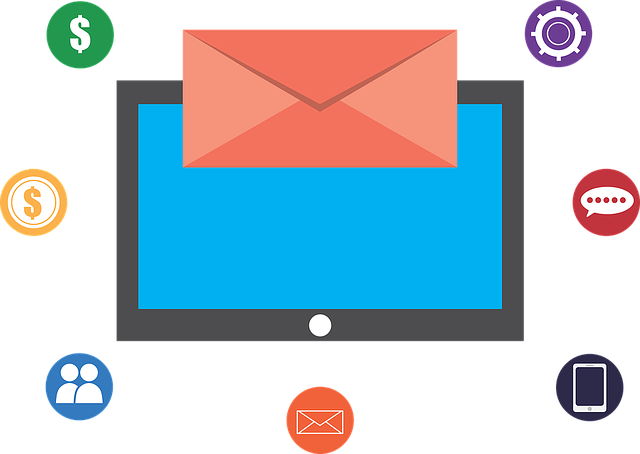Imagine your email campaign as a well-oiled machine, smoothly delivering your messages straight to your audience’s inbox. Just like a perfectly timed dance routine, your emails hit the mark every time, captivating your subscribers and driving conversions. But achieving such flawless deliverability and inbox placement requires careful planning and execution.
In this article, we will unveil the best practices for email campaign management that will ensure your messages not only reach your recipients but also engage them. Like a skilled conductor leading a symphony, you will learn how to orchestrate your email campaigns to maximize deliverability and inbox placement.
From understanding email deliverability metrics to building a high-quality email list, crafting engaging content to optimizing email design, implementing email authentication to monitoring and improving engagement metrics – we’ve got you covered.
Get ready to fine-tune your email campaigns and hit all the right notes with your audience. Let’s dive in!
Key Takeaways
- Monitoring and improving deliverability metrics such as bounce rates, complaint rates, and spam trap hits is crucial for ensuring emails reach the right inbox.
- Building a high-quality email list through segmentation and hygiene practices can significantly improve open and click-through rates.
- Crafting engaging and relevant content, along with personalization strategies like segmenting the audience and using dynamic content, can drive higher response rates.
- Implementing email authentication (SPF, DKIM, DMARC) and using a reputable email service provider are essential for preventing spoofing and improving deliverability rates.
Understand Email Deliverability Metrics
Did you know that understanding email deliverability metrics is the key to ensuring your emails reach the right inbox?
Email deliverability challenges, such as landing in the spam folder or being blocked altogether, can greatly impact the success of your email campaigns. By monitoring and analyzing your deliverability metrics, you can gain valuable insights into how your emails are being received by recipients and take steps to improve your email reputation management.
Key metrics to pay attention to include bounce rates, complaint rates, and spam trap hits. By identifying issues and addressing them proactively, you can increase your email deliverability and reach more of your intended audience.
Now, let’s transition into the subsequent section about how to build a high-quality email list.
Build a High-Quality Email List
By focusing on creating a high-quality list, you’ll ensure that your emails reach the right people and increase the chances of engagement and conversions. Building a high-quality email list involves two important practices: email list segmentation and email list hygiene.
Segmenting your email list allows you to send targeted messages to specific groups of subscribers based on their interests, preferences, or demographics. This personalized approach increases the relevance of your emails and improves engagement rates. Additionally, regularly cleaning your email list by removing inactive or invalid email addresses ensures that your messages reach active and interested subscribers, improving your overall deliverability.
To illustrate the importance of these practices, take a look at the following table:
| Segment | Open Rate | Click-Through Rate |
|---|---|---|
| Unsegmented | 15% | 3% |
| Segmented | 25% | 7% |
As you can see, segmenting your email list can significantly improve your open and click-through rates, leading to better campaign performance.
Crafting engaging and relevant content is the next step in optimizing your email campaign.
Craft Engaging and Relevant Content
Crafting engaging and relevant content is key to captivating your audience and driving higher response rates in your email marketing efforts. To achieve this, consider implementing the following personalization strategies:
-
Segment your audience based on demographics, preferences, or past interactions to deliver tailored content that resonates with each recipient.
-
Use dynamic content that adapts to the recipient’s behavior or location, creating a more personalized and engaging experience.
-
Optimize your subject lines by making them concise, compelling, and relevant to the content within the email.
-
Experiment with A/B testing to determine which subject lines and content formats generate the highest open and click-through rates.
By employing these personalization strategies and optimizing your subject lines, you can significantly increase the effectiveness of your email campaigns.
As you move forward, it’s important to also focus on optimizing your email design for deliverability and inbox placement.
[Transition into the next section: ‘Optimize email design for deliverability’]
By ensuring your emails are designed to meet deliverability standards, you can maximize the chances of reaching your audience’s inbox and achieving your desired outcomes.
Optimize Email Design for Deliverability
Optimizing your email design is crucial to ensure that your messages successfully reach your audience’s inbox and make a lasting impact. By improving deliverability rates and enhancing email reputation, you can increase the chances of your emails being seen and engaged with by your subscribers. One way to achieve this is by designing your emails to be mobile-friendly, as more and more people are accessing their emails on smartphones and tablets. Additionally, keep your email design simple and clean, with a clear call-to-action and relevant content. Incorporating a 2 column and 5 row table can help organize and present information in a visually appealing way. In the next section, we will discuss how to implement email authentication to further improve your deliverability and inbox placement.
Implement Email Authentication
To ensure your emails are delivered to the inbox and not marked as spam, it’s crucial to implement email authentication.
Start by setting up SPF, DKIM, and DMARC records to verify the authenticity of your emails and prevent spoofing.
Additionally, using a reputable email service provider won’t only simplify the authentication process but also improve your deliverability rates.
Take these steps to establish trust and credibility with email providers, ensuring your messages consistently reach your audience’s inbox.
Set Up SPF, DKIM, and DMARC Records
Ensure your email campaigns have optimal deliverability and inbox placement by setting up SPF, DKIM, and DMARC records. These email authentication methods play a crucial role in managing your email reputation and increasing the chances of your emails reaching the inbox. Here are four reasons why implementing SPF, DKIM, and DMARC is essential:
- SPF (Sender Policy Framework) helps verify that the email is sent from an authorized server, preventing spoofing and improving deliverability.
- DKIM (DomainKeys Identified Mail) adds a digital signature to your emails, ensuring their authenticity and boosting inbox placement.
- DMARC (Domain-based Message Authentication, Reporting, and Conformance) combines SPF and DKIM to provide a comprehensive email authentication solution, enhancing your reputation and reducing the risk of your emails being marked as spam.
List segmentation is crucial for targeting your audience effectively, reducing bounce rates, and improving deliverability.
To further enhance your email deliverability, the next section will discuss the importance of using a reputable email service provider.
Use a Reputable Email Service Provider
To ensure your emails reach the intended recipients and avoid getting flagged as spam, it’s crucial to set up SPF, DKIM, and DMARC records. These authentication protocols verify the authenticity of your emails and establish trust with mailbox providers. Now, let’s talk about another important aspect of email campaign management: using a reputable email service provider. By partnering with a reliable and trustworthy provider, you can ensure the reliable delivery of your emails. They have robust infrastructure, strong sender reputation, and dedicated teams to handle deliverability issues. This builds trust with mailbox providers and increases your chances of inbox placement. When selecting a provider, consider their deliverability rates, reputation, and available features. With a dependable provider, you can focus on creating engaging content and reaching your audience effectively. Now, let’s dive into the next step: monitoring and improving engagement metrics.
Monitor and Improve Engagement Metrics
Boost your email campaign’s performance by actively monitoring and enhancing engagement metrics. To improve open rates and reduce unsubscribe rates, here are four essential tips:
-
Craft compelling subject lines: Grab your subscribers’ attention with concise and intriguing subject lines. Make sure they accurately reflect the content of your emails.
-
Segment your audience: Tailor your messages to specific groups based on demographics, interests, or previous interactions. This personalization will increase relevancy and engagement.
-
Test and optimize email content: Experiment with different formats, layouts, and calls-to-action to identify what resonates best with your audience. Use A/B testing to make data-driven decisions.
-
Encourage feedback and interaction: Include interactive elements like polls, surveys, or social media buttons to encourage subscribers to engage with your emails. Respond promptly to their inquiries or feedback, showing that you value their input.
By implementing these strategies, you can actively improve engagement metrics and enhance the overall success of your email campaigns.
Frequently Asked Questions
How can I improve my email deliverability rates?
To improve your email deliverability rates and increase engagement, focus on improving open rates.
Start by crafting compelling subject lines that grab your recipients’ attention.
Personalize your emails to make them more relatable and relevant to your audience.
Optimize your email design for mobile devices to ensure a seamless user experience.
Regularly clean your email list to remove inactive or unengaged subscribers.
Finally, monitor your email metrics and make data-driven adjustments to continuously improve your email performance.
What are some common reasons why emails end up in the spam folder?
Emails often end up in the spam folder due to email filtering systems flagging them as potential spam. Common spam triggers include using certain keywords, having a high number of links, using excessive capital letters or exclamation marks, and sending emails from suspicious or unfamiliar email addresses.
To avoid this, it’s important to carefully craft your emails, use a reputable email service provider, and regularly monitor your email deliverability rates. By doing so, you can increase the chances of your emails reaching the inbox instead of the spam folder.
How can I ensure that my subscribers are engaged with my email content?
You want your subscribers to be captivated by your email content, like a thrilling book they can’t put down.
To ensure engagement, create personalized and relevant content that speaks directly to their needs and interests.
Use eye-catching subject lines and compelling visuals to grab their attention.
Segment your email list to send targeted messages based on their preferences.
Continuously analyze and optimize your email content effectiveness by tracking open rates, click-through rates, and conversions.
What types of email authentication methods should I implement to improve deliverability?
To improve deliverability, it’s crucial to implement effective email authentication methods. By using best practices like SPF (Sender Policy Framework), DKIM (DomainKeys Identified Mail), and DMARC (Domain-based Message Authentication, Reporting, and Conformance), you can establish your email’s authenticity and build trust with ISPs.
These authentication methods verify the sender’s identity and ensure that your emails aren’t mistaken for spam. By incorporating these practices, you’ll increase the chances of your emails reaching the inbox and engaging your subscribers.
How do engagement metrics impact email deliverability and inbox placement?
Engagement metrics play a crucial role in determining email deliverability and inbox placement. By measuring factors like open rates, click-through rates, and subscriber interaction, you can gauge the level of interest and satisfaction among your recipients. Positive engagement metrics indicate a strong email reputation, which can lead to improved deliverability.
Additionally, email design also influences deliverability. Ensuring that your emails are visually appealing, mobile-friendly, and easy to navigate can positively impact your chances of reaching the inbox.
Conclusion
Congratulations on completing this article on email campaign management best practices!
By following the strategies outlined here, you now have the tools to ensure your emails are delivered to the right place and seen by your target audience.
Remember to constantly monitor and improve your engagement metrics to maximize the effectiveness of your campaigns.
Think of your email deliverability as a well-oiled machine, smoothly navigating through the cluttered inbox landscape, reaching your recipients with precision and impact.
Keep these practices in mind to achieve inbox placement success and watch your email campaigns soar!








